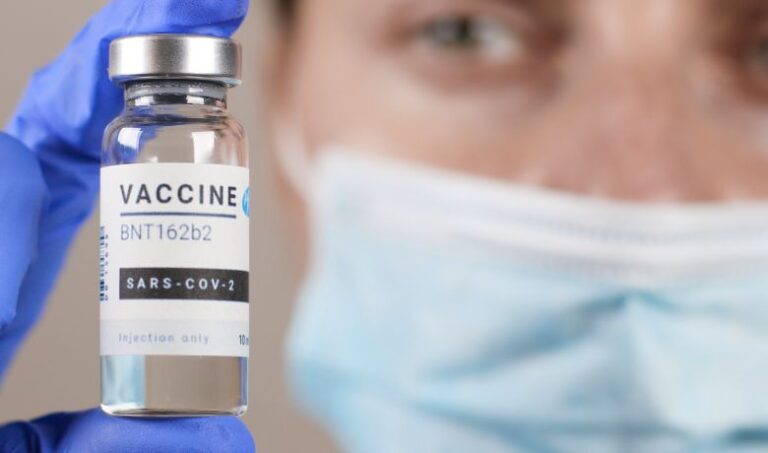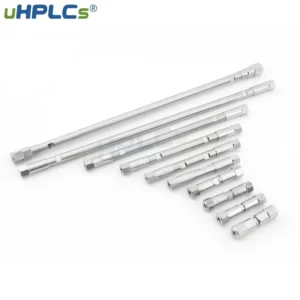
How to Improve Your HPLC Column Efficiency
High-performance liquid chromatography (HPLC) plays a critical role in analytical laboratories for the separation, identification,
Home » HPLC Applications in Biopharmaceutical Industry
Contact uHPLCs Today for Any Questions for HPLC / UHPLC

High-performance liquid chromatography (HPLC) plays a critical role in analytical laboratories for the separation, identification,

High-performance liquid chromatography (HPLC) systems rely on a range of components, from tubing and fittings

In high-performance liquid chromatography (HPLC), accuracy and consistency are paramount. However, even with the most
High Performance Liquid Chromatography (HPLC) is indispensable for the biopharmaceutical industry due to its reliability, precision, and versatility. It’s utilized extensively in drug discovery, formulation, and quality control. It helps ensure the purity of raw materials, monitors synthesis processes, verifies product quality, and identifies impurities.
Moreover, HPLC is essential for protein and peptide analysis, biomarker identification, and pharmacokinetic studies. In essence, HPLC underpins the production of safe and effective therapeutics in the biopharmaceutical industry.

High-Performance Liquid Chromatography (HPLC) plays a crucial role in the biopharmaceutical industry, offering a range of applications that enhance the quality and effectiveness of medicinal products:
Pharmaceutical Synthesis: HPLC is used to monitor the synthesis of pharmaceuticals, enabling researchers to verify that the correct product is being produced and that no unwanted side reactions are occurring.
Quality Control and Assurance: HPLC helps ensure the purity of raw materials, monitor production processes, and verify the final product’s quality. It can detect and quantify impurities or degradation products, ensuring that only safe and effective products reach the market.
Protein and Peptide Analysis: With its high resolution, HPLC is widely used in the analysis of proteins and peptides. It allows for the determination of molecular weight, purification, sequence verification, and identification of post-translational modifications.
Drug Analysis: HPLC can separate, identify, and quantify the active pharmaceutical ingredient in a formulation, as well as its degradation products, enabling the determination of drug stability.
Biomarker Identification: HPLC is used in proteomic and genomic studies for the identification and quantification of biomarkers, which is critical for disease diagnosis, prognosis, and therapeutic monitoring.
Pharmacokinetic Studies: In drug discovery and development, HPLC is used to determine the pharmacokinetic properties of new drugs, including their absorption, distribution, metabolism, and excretion (ADME) profiles.
The versatility, high resolution, and quantitative precision of HPLC make it a cornerstone in the biopharmaceutical industry, contributing to the delivery of safe and effective medicinal products.
The process of changing HPLC consumables in the biopharmaceutical industry is similar to that in other industries, with the primary goal being to maintain the integrity of the HPLC system and ensure the reliability of the results. Here is a general process for changing some common HPLC consumables:
HPLC Columns: Columns have a finite lifespan and must be replaced when they are worn out or clogged.
HPLC Filters: Filters are essential to remove any particulate matter that could interfere with the HPLC analysis.
HPLC Vials: Sample vials are consumables that must be replaced regularly to avoid contamination.
HPLC Tubing: Over time, the tubing can become worn or clogged and needs to be replaced.
Always remember to follow your organization’s specific protocols and the manufacturer’s instructions when changing HPLC consumables. It is also crucial to maintain a clean and organized workspace to prevent cross-contamination and ensure accurate results.

HPLC’s detailed and accurate analyses are invaluable in the biopharmaceutical industry, driving the creation of safe and effective therapeutics.
HPLC plays a critical role in drug development by helping to characterize new pharmaceutical compounds. This includes determining the compound’s identity, purity, impurity profile, and stability. HPLC can also analyze the pharmacokinetics, bioavailability, and metabolism of potential new drugs.
Quality control is essential to ensure the safety, efficacy, and consistency of biopharmaceuticals. HPLC is used to identify, characterize, and quantify active pharmaceutical ingredients (APIs) and their impurities. It can detect and measure contaminants, degradation products, and residuals, ensuring compliance with regulatory standards.
Absolutely. HPLC is used extensively for the detailed analysis of proteins and peptides in biopharmaceuticals. This includes protein sizing, the identification of post-translational modifications, and the determination of protein-protein interactions.
HPLC can identify and quantify biomarkers, which are indicators of normal or disease processes in the body. Biomarkers are critical in disease diagnosis, prognosis, and therapeutic monitoring. HPLC is used in proteomic and genomic studies for the identification and validation of these biomarkers.
In drug discovery and development, HPLC is used to determine the pharmacokinetic properties of new drugs. This includes their absorption, distribution, metabolism, and excretion (ADME) profiles. The data obtained can guide dosage decisions and help predict drug interactions and potential side effects.
HPLC is a crucial tool for monitoring the production process in biopharmaceutical manufacturing. It allows for the real-time analysis of the production process, helping to optimize yields, ensure product quality, and reduce waste. It can also confirm the removal of residuals and contaminants following production.

https://uhplcs.com/wp-content/uploads/2025/04/New-Flat-Design-Solvent-Filter-2025-1_batch.mp4 Flat Type 3-Step Connector HPLC Solvent Suction Filter Item: PCF0B-00140 The HPLC Flat Type Solvent Filter is a high-performance filtration solution designed to improve solvent

USHD HILIC-Zil Hilic HPLC Column USHD Hilic-ZIL Column is a hydrophilic interaction ion exchange column designed with bonded zwitterionic functionalities, enabling efficient separation of acidic,

USHD HILIC-Amide Hilic HPLC Column USHD Hilic-Amide Column is a chimeric HILIC hydrophilic interaction column based on amide bonding, offering similar retention behavior to HILIC
Superior Quality, On-demand Customization,Continuous Optimization,
Strictly control the manufacturing process,
Intimate Service, Go All Out.
WhatsApp us
Subscribe for exclusive offers and updates on new arrivals